Learn how to make my Korean mom’s spicy and flavorful Kimchi Sujebi, a classic Korean soul food. This rich, umami-packed soup features hand-torn noodles in a hearty kimchi broth using only simple ingredients. Perfect for anyone craving authentic Korean comfort food!

Table of Contents
What is Sujebi? 수제비
Sujebi is a Korean dish made by tearing wheat flour dough by hand into thin pieces and cooking them in boiling soup. You could loosely translate it as “hand-pulled noodles,” but because the pieces are thin, wide, and round, it’s not quite accurate to call it a noodle dish. It’s more like a thinner version of Italian gnocchi. For this reason, it’s best to just call it soojebi.
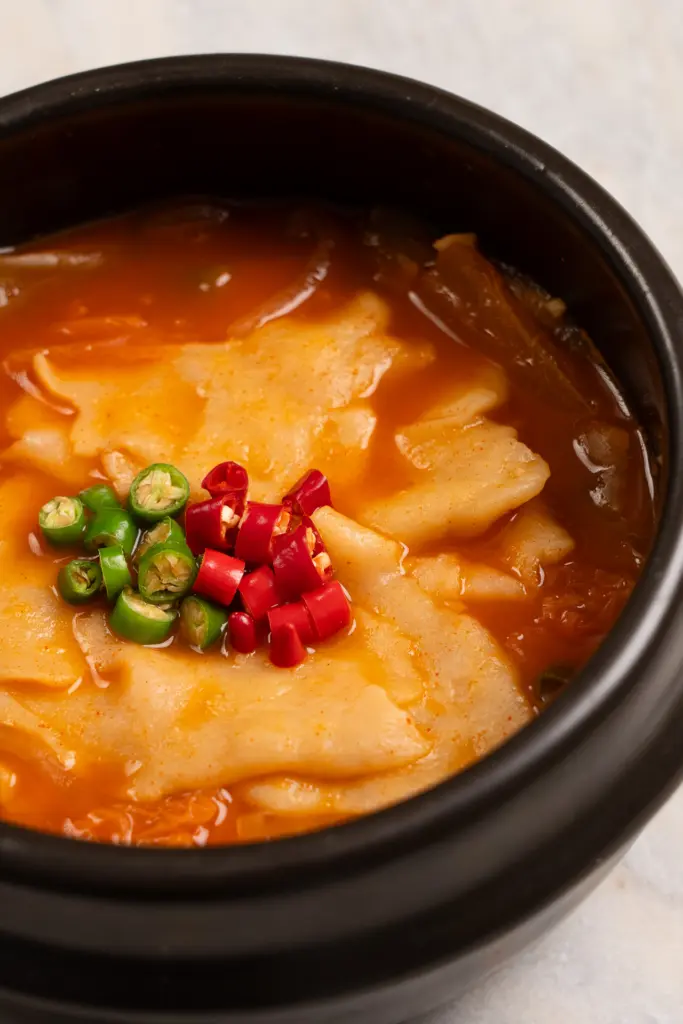
Sujebi is a popular comfort food in Korea, often enjoyed alongside kalguksu (knife-cut noodles). Sometimes additional ingredients like zucchini, potatoes, or onions are added. Today’s recipe is kimchi soojebi, which can be made with just kimchi—no extra ingredients needed. Along with potato soojebi, kimchi soojebi is one of the most commonly eaten soojebi dishes in Korean households, and many Koreans consider it a true soul food. For me, it’s also a soul food made with my mom’s love, something she often prepared when I was growing up. Just one bowl of this kimchi soojebi somehow gives you a boost of energy.
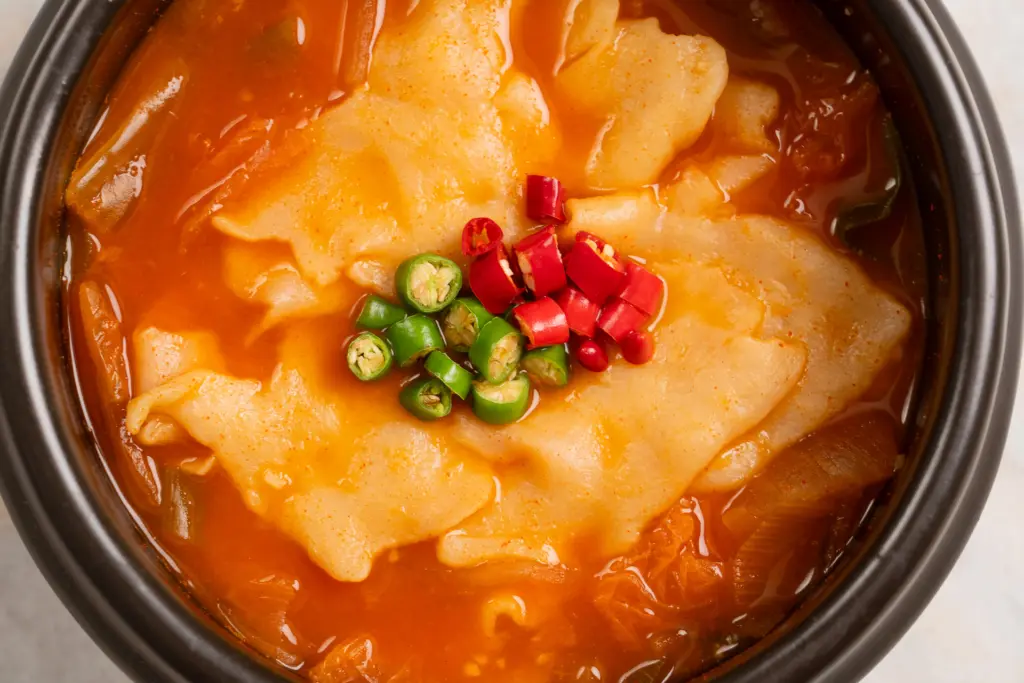
History of Sujebi
Today, sujebi is considered a classic Korean comfort food for everyone, but back in the Joseon Dynasty, wheat flour was rare, so soojebi was a luxury dish enjoyed by the yangban (Korean aristocracy) and in royal courts. Ordinary people at the time made soojebi using buckwheat or barley instead.
Wheat flour soojebi became widely popular only after the Korean War. Korea received wheat flour as aid from the United States, and with the government’s campaign promoting mixed flour meals, wheat-based dishes like soojebi became everyday food for ordinary people. Kalguksu (knife-cut noodles) is another dish that gained popularity in the same way.
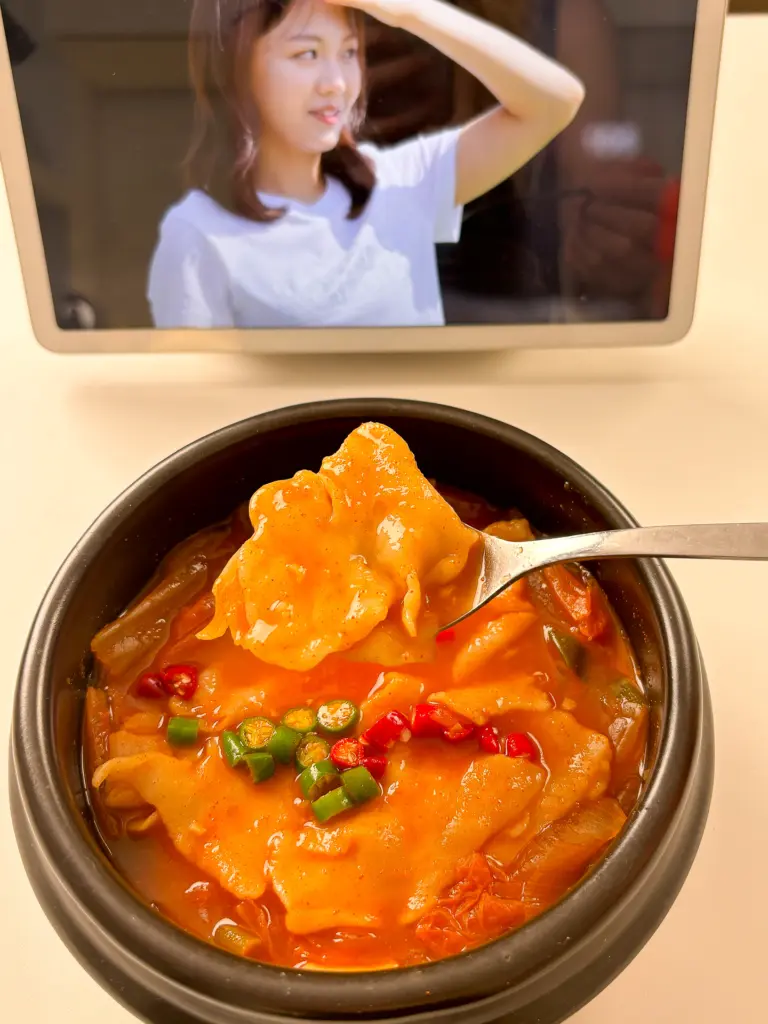
Kimchi Sujebi Recipe Tips
- Resting the dough: Sujebi dough needs to rest before cooking. Resting allows the gluten to develop, giving the soojebi a chewier and more satisfying texture. I recommend resting the dough for at least 30 minutes, but I personally let it rest for 2 hours. Any leftover dough can be used the next day, and by then it will be even more flavorful.
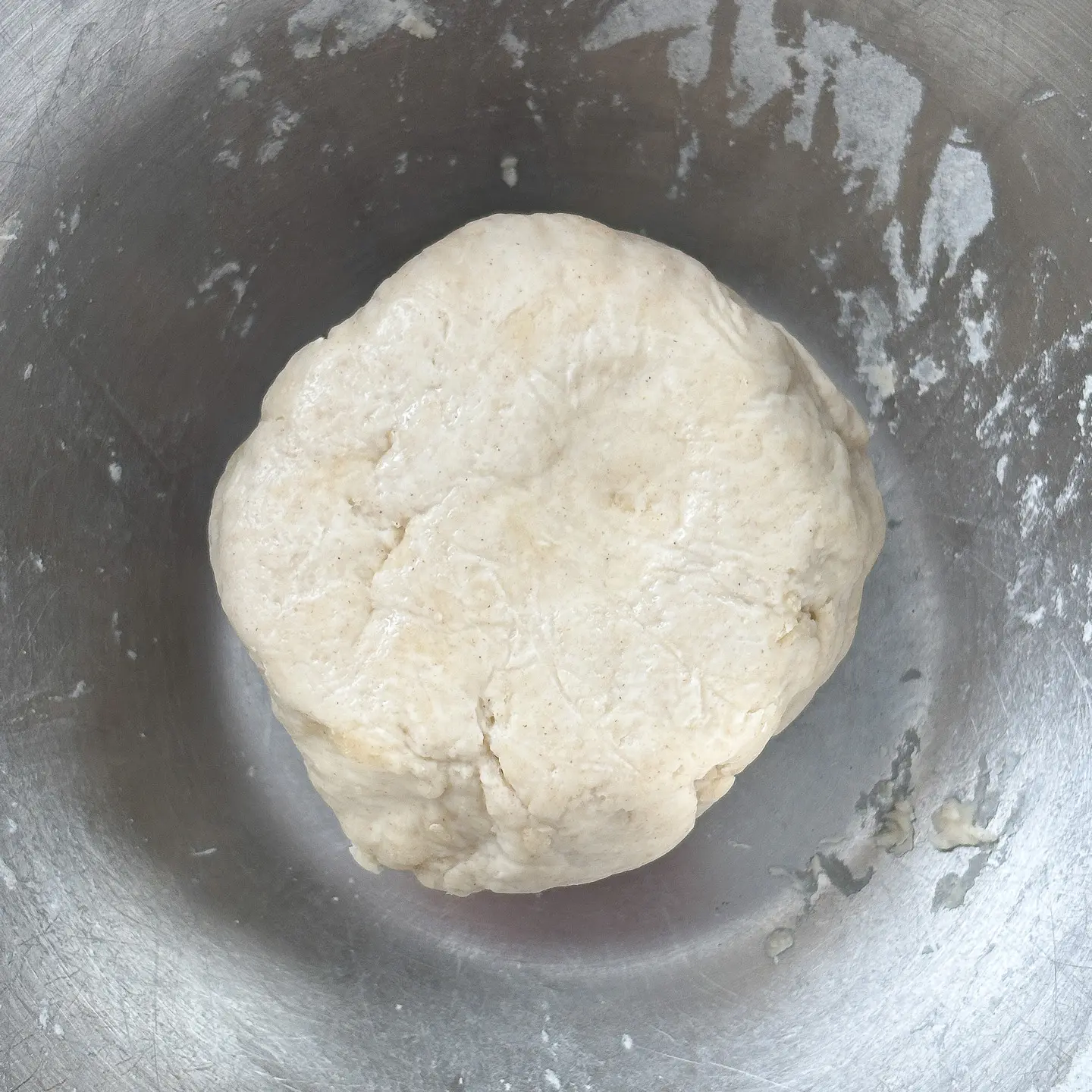
- Potato starch: Adding potato starch helps the dough hold its shape in the soup and gives it a pleasantly chewy texture.
Ingredients for Kimchi Sujebi
- Seafood stock: Sujebi comes in many varieties, but using a seafood-based stock is the most common. You can make it with dried anchovies, dashida, or dried shrimp, or use convenient stock cubes like I do.
- Vegetables: Zucchini, carrots, onions, and potatoes are often added. For kimchi soojebi like today, kimchi alone is enough, but adding zucchini or potatoes makes it even more delicious.
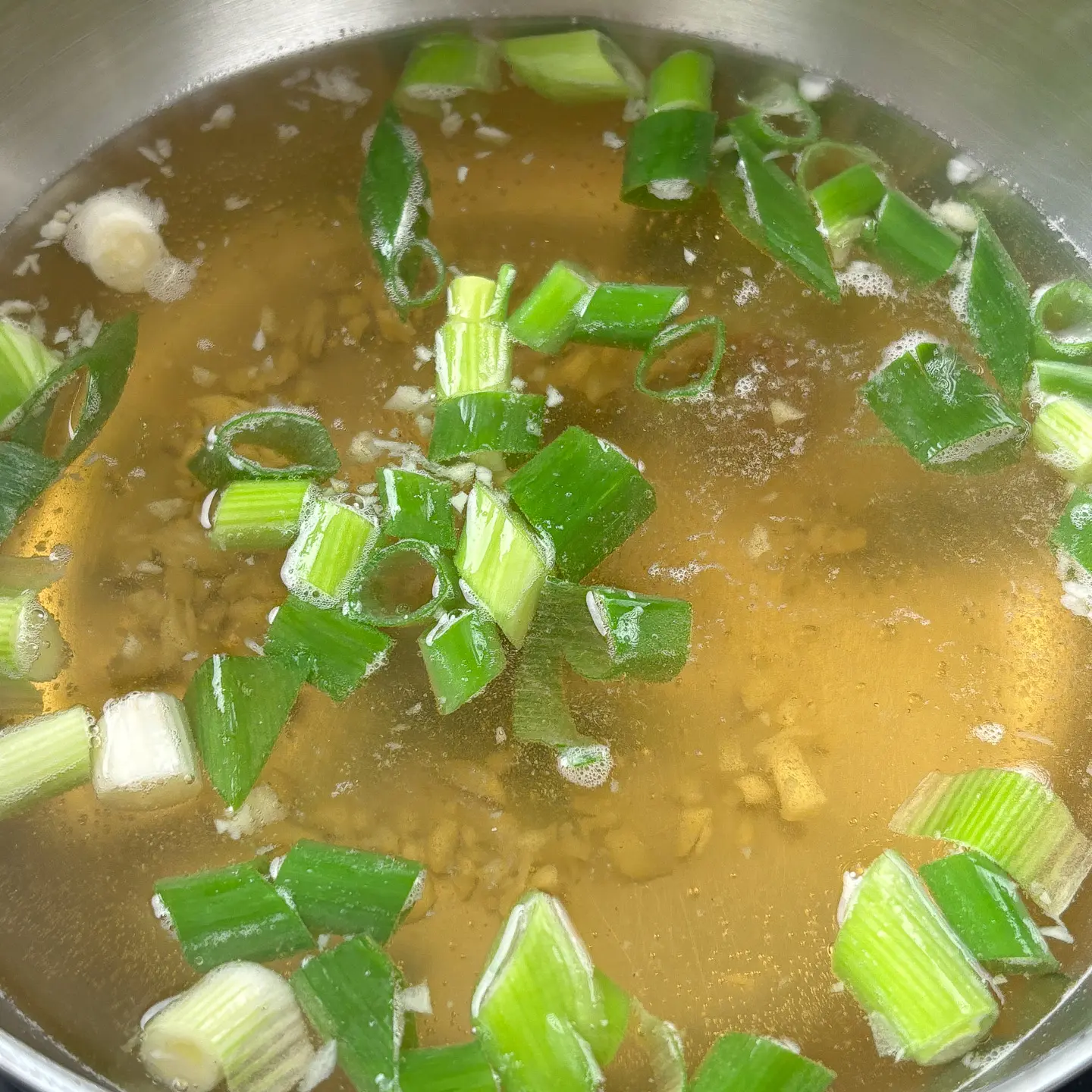
- Gochujang (Korean chili paste): Some spicy soojebi recipes include gochujang. For today’s clean and flavorful kimchi soojebi, I didn’t use any.
When to Eat?
For Koreans, sujebi is often considered a simple and convenient meal. People usually eat it on days when they don’t feel like cooking or want a quick lunch. Eating soojebi on rainy days is also a beloved part of Korean food culture.
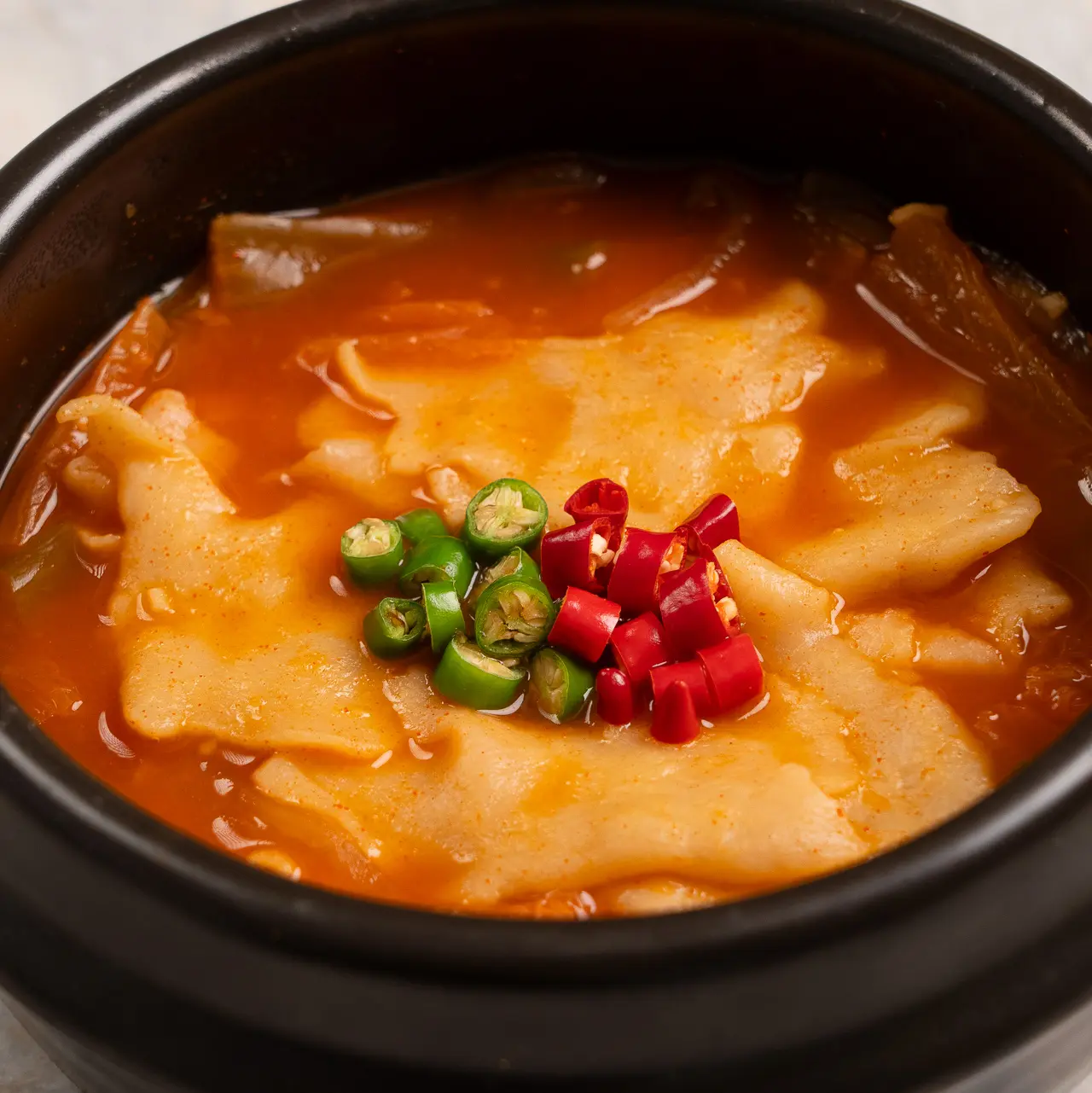
Sujebi Menus
Besides Kimchi Sujebi, there are many types of sujebi in Korea.
- Potato Soojebi (Gamja Soojebi): One of the most common homemade soojebi. It’s made with everyday ingredients like flour, potatoes, zucchini, carrots, and onions. The broth is easy to prepare using dried anchovies, kelp, dried shrimp, or a convenient stock cube, and seasoned simply with soy sauce. This is the signature menu at Samcheong dong sujebi.
- Perilla Seed(Deulkkae) Soojebi: Similar to potato soojebi, but perilla seed powder is added to the broth, giving it a thick, nutty, and rich flavor. It’s deeply savory and very delicious.
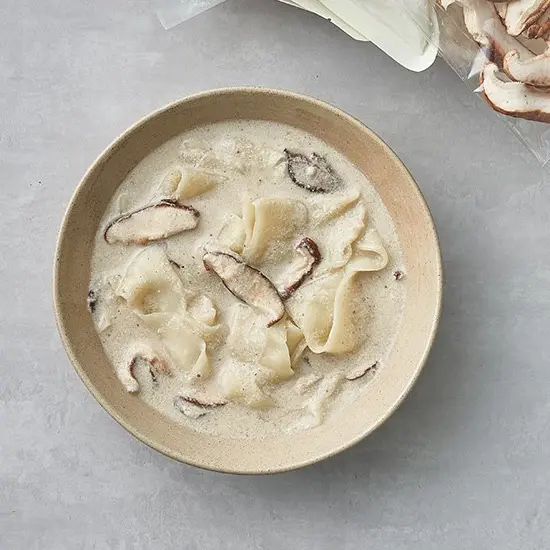
- Clam(Bajirak) Soojebi: Clams are more affordable in Korea than in Europe, so many dishes include them. The broth is made with plenty of clams, giving the soup a full, ocean-like flavor.
- Kkaljebi: A combination of kalguksu (knife-cut noodles) and soojebi. Perfect for those who can’t choose between the two, offering the best of both worlds in one bowl.
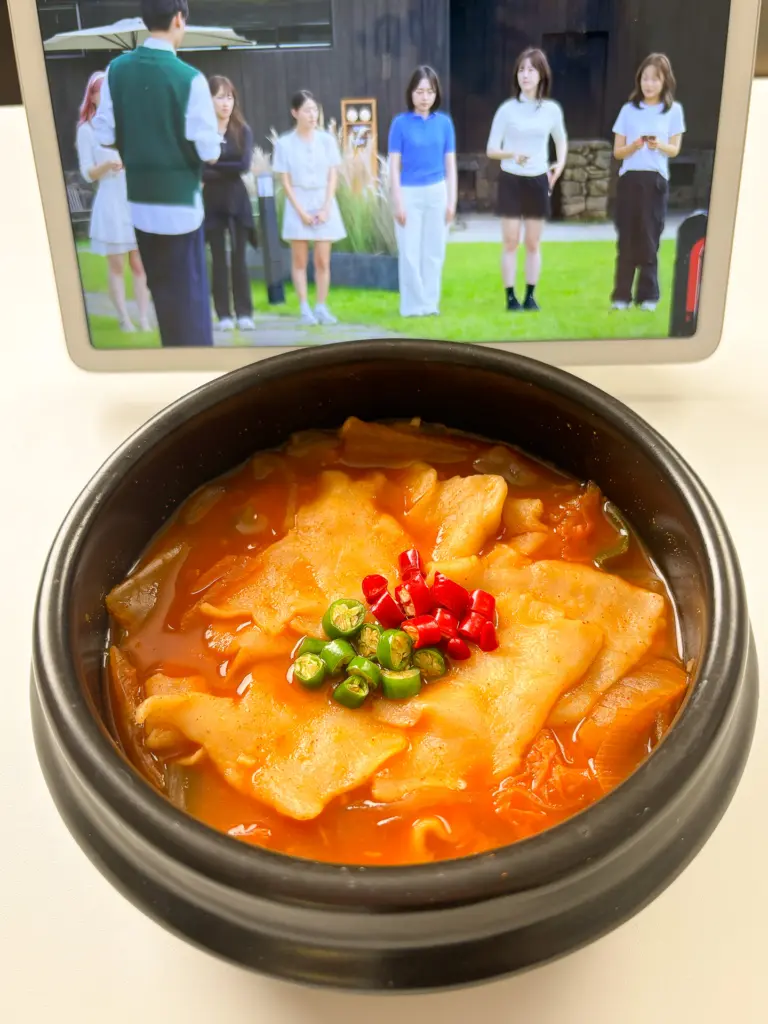
Best Side Dishes with Sujebi
- Kimchi: Soojebi is always best enjoyed with kimchi. While aged kimchi works well, freshly seasoned kimchi (geotjeori) pairs especially nicely, similar to how it complements kalguksu.
- Dumplings (Mandu): In Korea, it’s common to enjoy dumplings alongside noodles or soojebi. Since soojebi is considered a light meal rather than a hearty one, adding dumplings makes the meal more satisfying. You get extra protein, and taking a bite of juicy dumpling followed by a spoonful of soojebi broth is pure comfort.
- Korean Pancake (Jeon): Many noodle restaurants in Korea also serve savory pancakes as a side dish. Ordering one alongside sujebi helps make the meal feel more filling and complete.
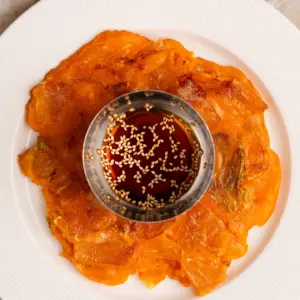
FAQs about Korean Sujebi
What is sujebi made of?
Sujebi is a traditional Korean dish made by mixing flour, salt, and water to form a dough, which is then hand-torn into small pieces and cooked in a broth, such as seafood or beef bone stock.
What does sujebi taste like?
The sujebi dough is chewy, similar to thin gnocchi. The flavor of the soup depends on the broth used—common options are seafood broth or beef bone broth. At home, it’s often made spicy with kimchi or gochujang, like in today’s recipe.
What’s the difference between Kalguksu and Sujebi?
Both are made from wheat dough, but kalguksu is rolled thin and cut into noodles with a knife, while sujebi is hand-torn into small, round pieces. Both have a pleasantly chewy texture.
What’s the best flour to use for sujebi?
In Korea, medium-strength flour is typically used. In Europe or the U.S., you can use all-purpose flour as a substitute.
What is sujebi ramen?
Sujebi ramen is made by adding sujebi dough to instant ramen. In Korea, it’s sometimes called ra-jebi. My Korean mom often made it for weekend lunch—it’s super easy to make and incredibly delicious.
Kitchen Guide for Kimchi Soojebi
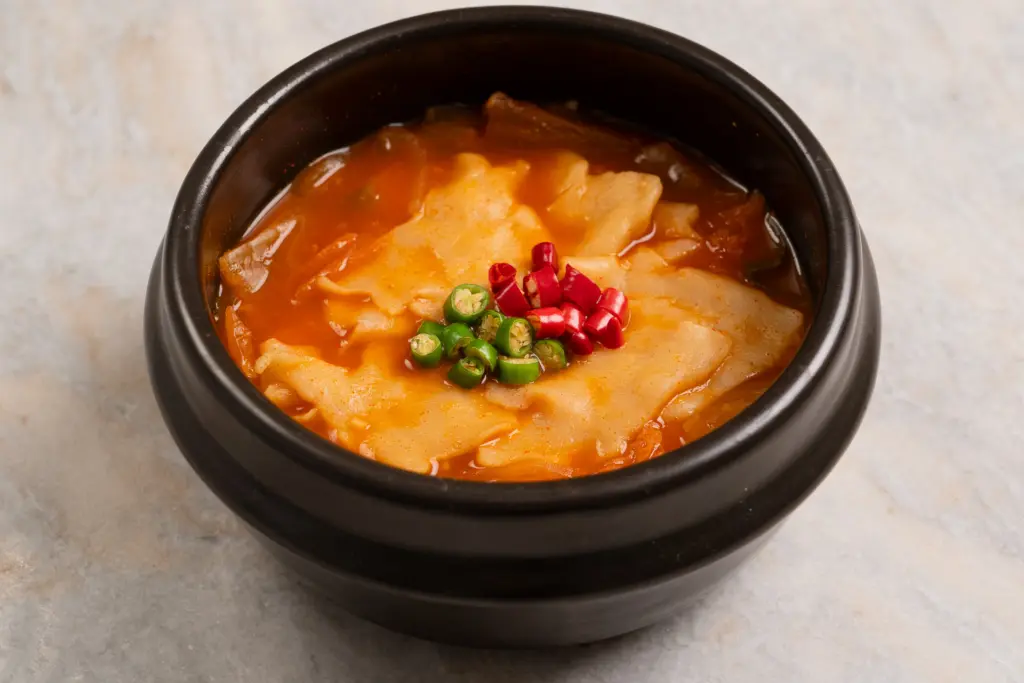
Disclosure: Blonde Kimchi is part of the Amazon Services LLC Associates Program, an affiliate advertising program that allows websites to earn advertising fees by linking to Amazon.com and promoting products.
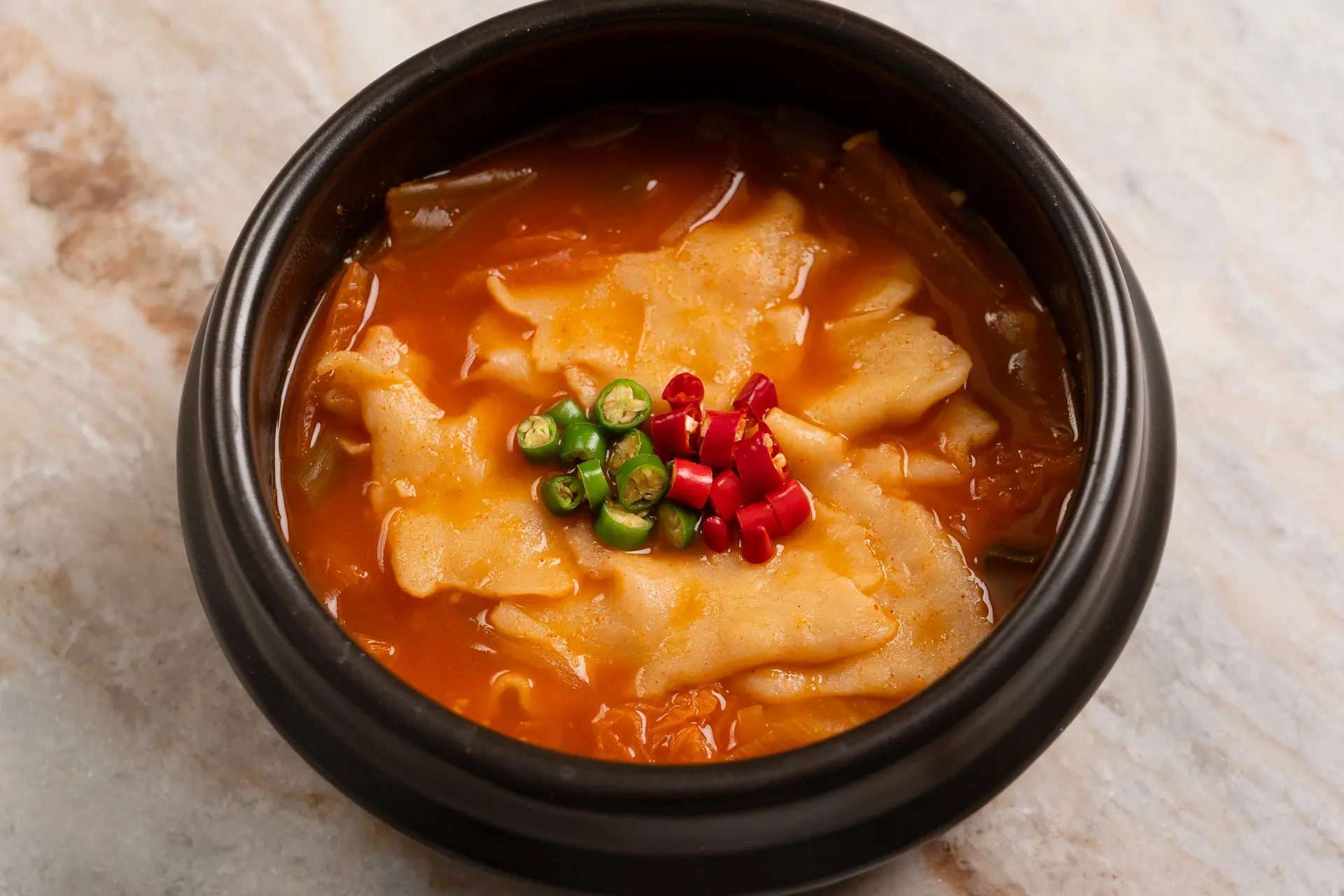
Easy Kimchi Sujebi by My Korean Mom
Ingredients
- 100 g all purpose flour
- 1 tbsp potato starch
- 1 tbsp cooking oil
- 1 pinch salt
- 50 g water
- 1 ladle chopped kimchi
- 3 tbsp kimchi juice
- 1 tbsp minced garlic
- 1/2 stalk green onion
- 1 cube Korean seafood soup stock (or Korean Dashida 1/2 tbsp)
- 1 tbsp soup soy sauce (gukganjang)
- 1 tbsp anchovy sauce (Korean fish sauce)
- 1 tbsp gochugaru
- 600 ml water
Equipment
- 1 Pot
- 1 Knife & cutting board
- 1 ladle
Method
- In a mixing bowl, combine flour, potato starch, cooking oil, and a pinch of salt. Gradually add water and knead into a dough.
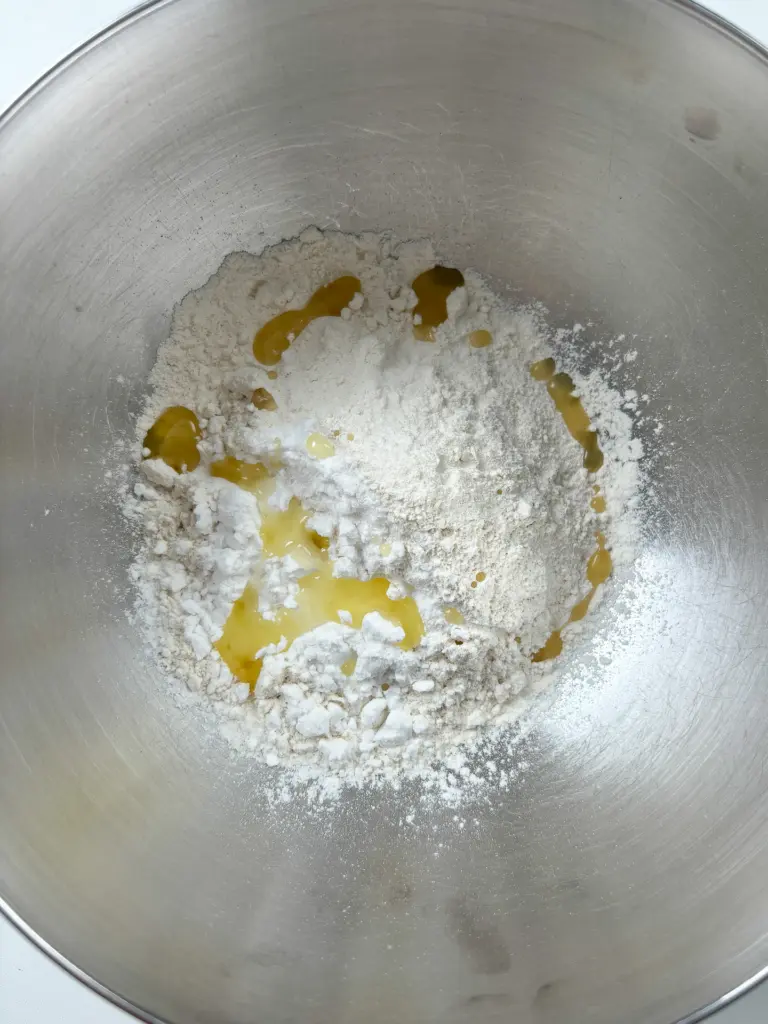
- Let it rest for at least 30 minutes up to 2 hours.
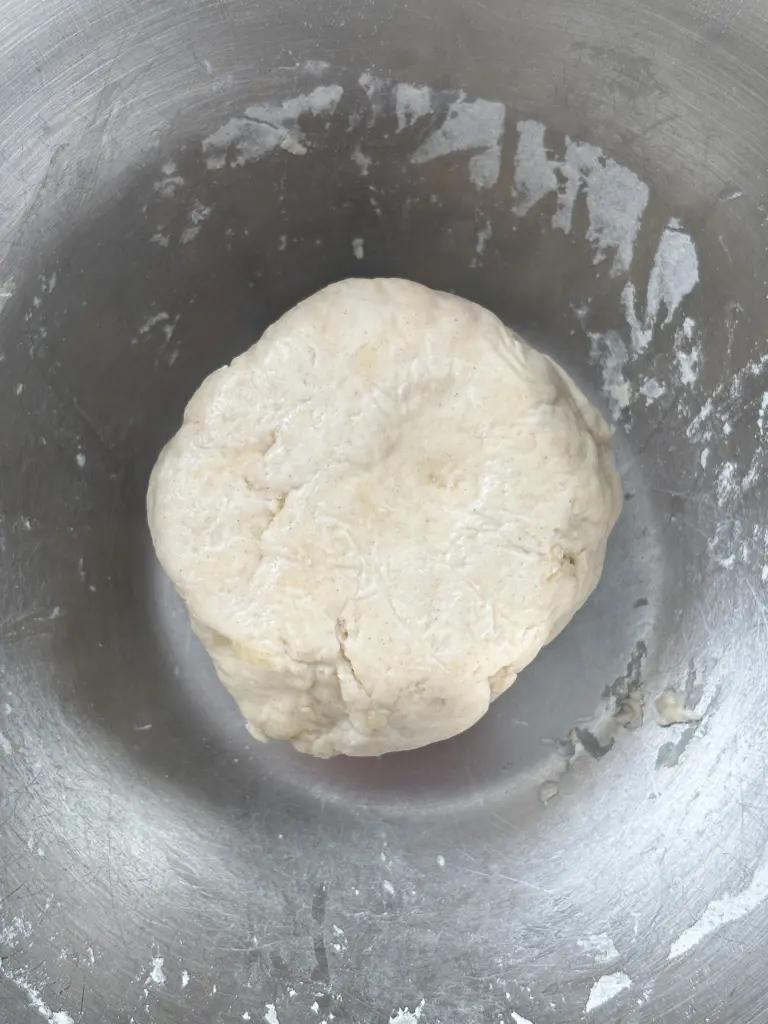
- Chop the kimchi into small pieces. Prepare 3 tbsp of kimchi juice.
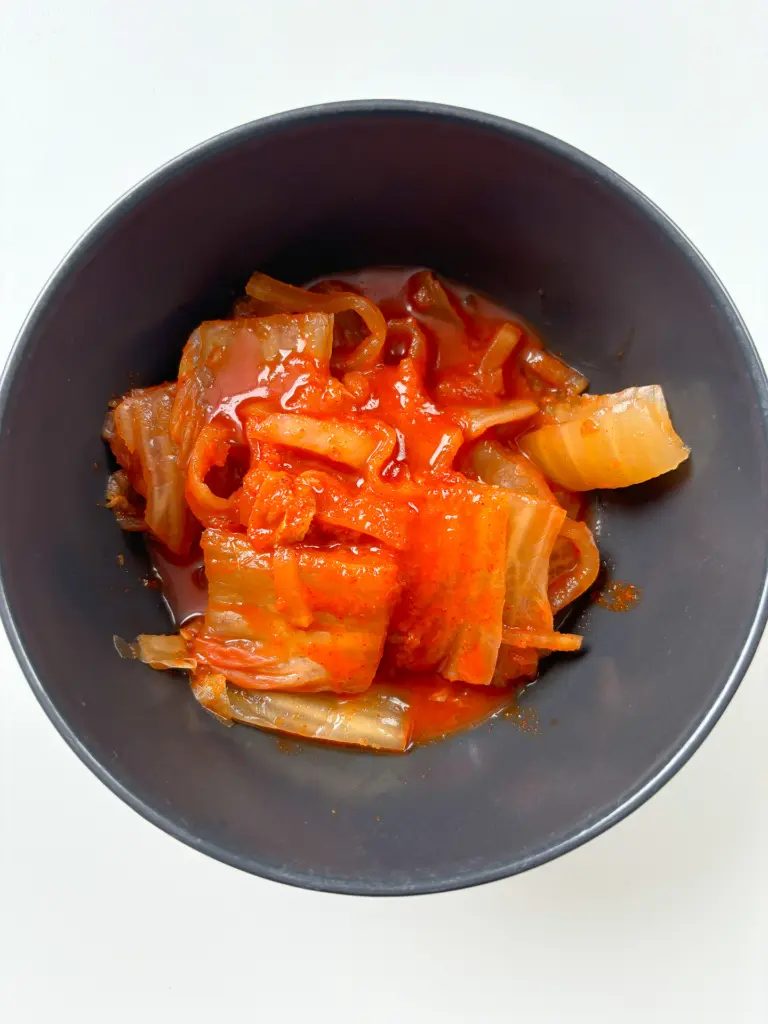
- Mince the garlic and chop the green onion. If you want, you can add chili peppers as well.
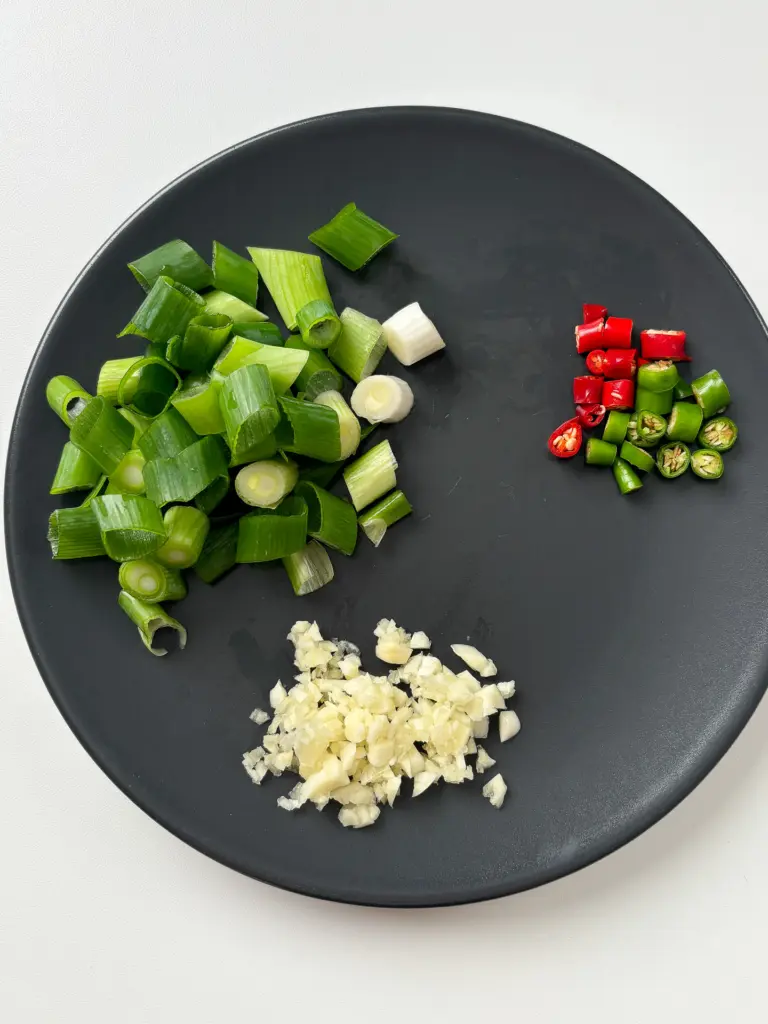
- In a pot, bring 600ml water to a boil.
- Add the soup stock cube (or Dashida), soy sauce, and anchovy sauce.
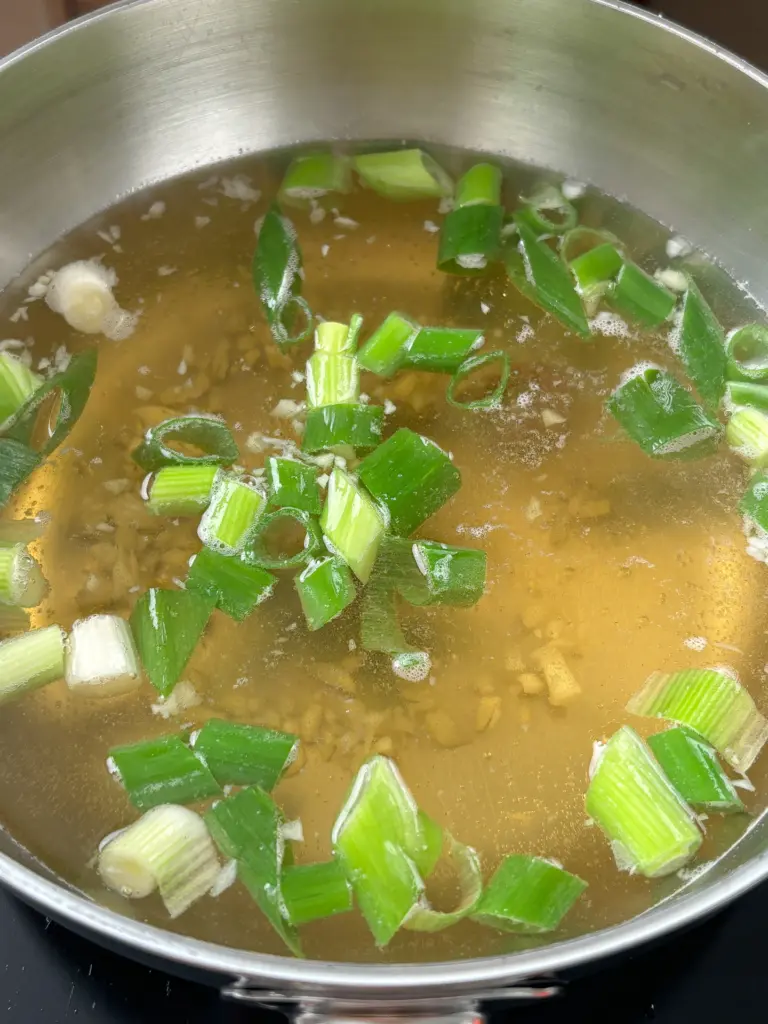
- Add minced garlic, green onion, kimchi, kimchi juice, and red chili powder.
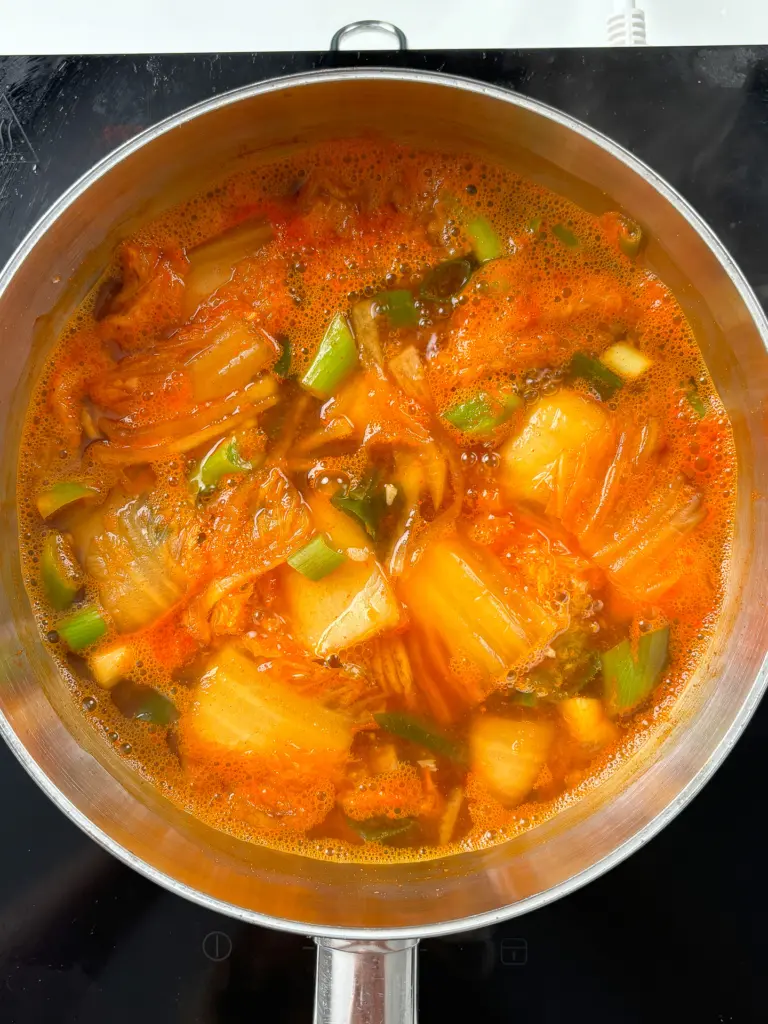
- Once the soup boils, pinch small pieces of the dough and drop them into the pot.
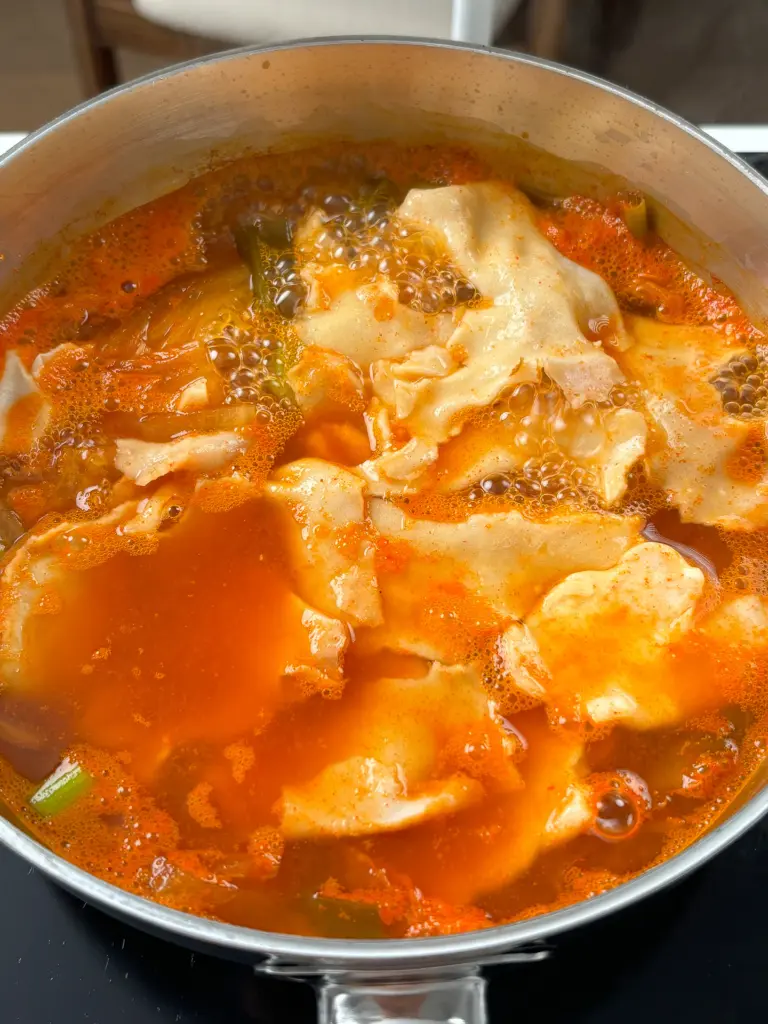
- Cook until the sujebi pieces are fully cooked. Serve hot.
- The deep broth flavor created by seafood stock and kimchi.
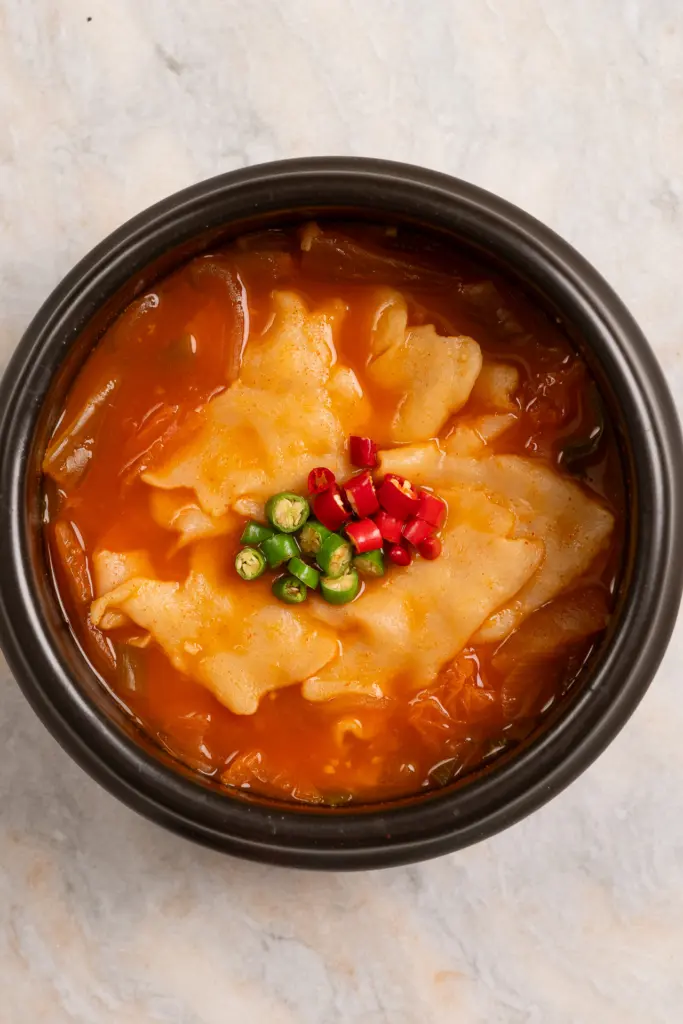
Nutritional information is an estimate. For personalized advice, consult a registered nutritionist.
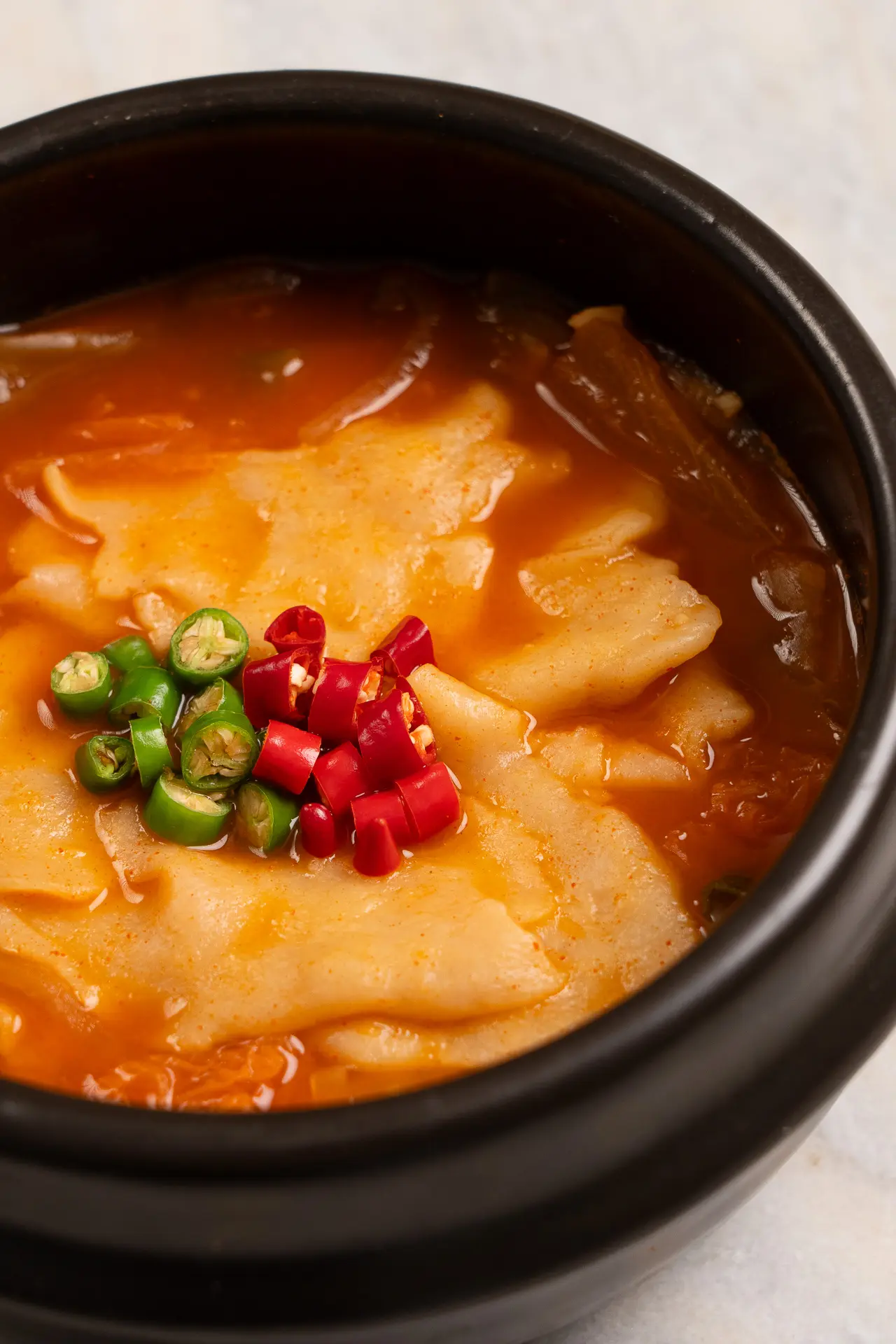
I had no idea kimchi could make spicy sujebi. The soup is so delicious. I was really surprised!